What Does Post Wellness Look Like?
Doing things the dirtbag way
For the first time in ten years, I started asking myself: should I get really into sports? Part of me is looking for attention — imagine pulling off a Chalamet-esque versatile culture aficionado? What a sick party trick. But mostly, like many others, I’m losing the sense of belonging and curiosity I once found in wellness. What was once treated as a quirky hobby — bootcamp workouts, freaky supplements, and strange retreats — has turned into a personality-defining lifestyle that’s extremely demanding and kind of cringe. With an influx of vintage sportswear, old sneakers, and the Knicks clips on my feed, I started reminiscing about my brief high school volleyball stint and adding old sports dramas to my watchlist. How tempting is the jump from the cruel world of mouth taping and cold plunges into the warm embrace of sports nostalgia — carbs, colors, cheers, and sweat stains? But while it’s certainly a way out, I am not convinced it’s a way forward. We can’t expect everyone to erase esoteric wellness facts from their brains, get off the secret weight loss treatments, and throw away the matching sets in their wardrobe — nor should we.
The men’s side of the wellness market offers a sneak peak into what the search for a middle ground between robotic self-optimization and raw human indulgence could look like. A sportswear brand Satisfy, for example, has spent the past decade building an equivalent of the old-school skateboarding subculture around extreme forms of running. Despite selling €120 tees and €240 shorts, the brand’s dusty, sweaty, bloody visuals make it feel both pleasantly textured and human in comparison to the dystopian longevity universe, and more accessible and humble than the moneyed athleisure world. Its in-house magazine Possessed discusses running in the context of psychedelics, fashion, and punk rock, and captures stories of its pro athletes who load up on donuts and pizza before running hundred-milers and frequently find themselves in the emergency room.
Edition+partners called this genre of fitness enthusiasts “wellness anarchists” — the people who both push themselves physically, often in pursuit of greatness and an endorphin rash, but also proudly dabble in vices. They cite a couple of other examples: ultra-runner William Goodge pausing for a beer mile and a cigarette in the middle of a cross-Australia run, and Travis Barker’s run club participants logging miles in Vans and Chuck Taylors. But while this lifestyle certainly looks attractive on others, it also sounds like a recipe for burnout since at its core, it’s just a crunchy take on the work hard, play hard mentality. Plus, just like the old-school extreme sport subcultures, it’s drenched in testosterone, making it hard to imagine how it would play out across identity lines.
Ironically, the second coming of a different subculture — “doing things” popularized by the activewear brand Outdoor Voices in the late 2010s — may offer a more viable vision for merging wellness and living together in a sustainable way, but only if it were to be executed by someone new, someone whose brain isn’t rotten by tech and capitalism. When “doing things” was originally coined, it marked the departure from performance in sportswear design and positioned life activities, like running errands or dog walks, as a form of exercise. Stretchy pants and sports bras flooded the farmers markets, cafes, and everyone’s wardrobes. What used to be gym clothes was now an everyday uniform, what used to be a compartmentalized hobby was now a lifestyle.
Now that we are looking to rein the wellness industry back in its place, the “doing things” motto could be easily flipped to be the guiding principle for a more grounded, social, and experience-rich lifestyle. Why spend four nights a week at the gym, when you can get your steps in by canvassing for a mayoral candidate who, by the way, runs around the city in dress shoes, suit, and tie? The time spent goofing around with friends in a park is equally enjoyable in a cotton and a sweat-wicking tee. The ultimate secret to peaceful sleep and radiant skin is a happy, balanced life in a world that’s stable and humane, so checking in on a friend or helping out a neighbor might be a better investment than another bottle of mysterious supplements. If the first coming of “doing things” turned every aspect of our lives into wellness, its return could be the way we knock it down from its pedestal.
The OG way of “doing things” was earnest and culty — it called for a uniform, a habit tracker, and an always-on attitude. It’s an equivalent of calling a flexible work schedule “work-life balance” when in reality, it’s just work, work, work. Ideally, its second coming would shape up to be a “choose your own adventure” type of deal that opens up the doors for multiple imperfect subcultures to exist under the same umbrella — doing things the dirtbag way. You can be a Jane Austin-esque character, like Ariel Kellogg, who swings nunchucks in a puff slip top and capris to the tunes of Project Pat; a modern cowboy who scales mountains in grippy high-tech shoes and Levi’s jeans; or a music geek who downs a couple of beers and sweats them out on the dance floor, dripped in Burberry and Stone Island. It’s about compromising productivity, achievement, and comfort for the sake of enjoyment, community, and style — not the other way around.
Coincidentally, that is exactly what nostalgia, and specifically sports nostalgia, is about — watching someone move with so much confidence and style that you can’t help but want to get a taste of it yourself. As a sports journalist and culture critic Zito Madu put it in a recent interview, “If I take a kid to watch a soccer game, the thing that he’s going to latch onto isn’t, like, yea we won that 3-2. It’s this player did something that’s so fantastic that it has drawn you into the sport, that it’s changed the way that you think about the way what is possible on the field.” Replicating that feeling in a world that’s been tempered by tech and capitalism, then, is the main challenge. Bringing back the visuals, styles, and icons associated with it are but a distraction.
CHAPTER ONE: LEAVE NOSTALGIA BEHIND
Creatives across industries have a soft spot for the sports nostalgia aesthetics — bold colors, quirky typefaces, and grainy texture. Mood board clothing brands shamelessly copy sports candids from the 80s, beauty brands shoot product promo in the style of Y2K basketball and skate reels, and very few hydration and protein brands have been able to resist the urge to throw a poster that looks like a retro magazine ad up on their grid.
“Sports represent a moment in time. Whether it’s a world record at the Olympics, a buzzer beater in game seven, or that time Zumba became super popular, it’s a memory we collectively share,” one of Chloe Gordon’s sources explains in a sports nostalgia issue of her design newsletter. “That memory includes the feeling of victory and euphoria, and most importantly for this topic, the design of that moment. Brands can tap into that feeling by referencing design. It feels familiar, even if it’s new.” It’s the perfect representation of the reference board epidemic — a shortcut to cultivating cultural cache without the pressure of risk taking that robs creatives of the opportunity to cultivate their own iconic moments. In sports terms, that means admitting defeat before the game even begins.
Ironically, flipping this approach and focusing on replicating the abstract elements of sports nostalgia images, like the stature of the athletes in the 80s and the 90s or the mischievous nature of street sports, may just be the secret to creating visuals and movements that feel both familiar and new. When you see pictures of Serena Williams and Maria Sharapova crashing their opponents in dangly earrings and a jean mini skort, the most interesting part isn’t the maker of the skort or the composition of the shot, it’s the clash of the casual, delicate objects, the powerful presence of the figures wearing them, and the intensity of the events. These photos are more than just memories from a particular tennis match — they are snapshots of the overall state of culture back then.
The only issue with capturing layered stories like this today is that the economics of sports have since shifted in a way that sucked the juice out of them, both on the processional and amateur levels. In that same interview with Day One FM, Zito Madu explains how the combination of the pay-to-play dynamic of youth sports, mass sports betting, and focus on profit maximization in major sports leagues have led to the decline in the “variety of play.” Athletes are encouraged to build a monetizable personality online, but rarely show any on the field, striving for points and efficiency. Even amateurs are more likely to break down their diet, gear essentials, and training regimen for their online followers than push the boundaries of their sport or take a shot at creating an entirely new discipline.
To find something worthy, you’ve got to get back into the streets. The most memorable stories as of late originate in the quirky subcultures that fly under the radar of indie publications and culture critics who are busy writing yet another piece about Dimes Squire. It’s endearing for Vibram Fivefingers to sponsor a toe wrestling competition and host a goofy frog-themed retreat while their counterparts at brands, like Puma, are cutting influencer and celebrity checks that materialize in nothing other than wacky fit pics. It’s cool for i-D to run a story about a medieval fighting tournament at the American Dream mall in New Jersey and an interview with an EF cyclist Ben Healy alongside a fashion show recap and a celebrity profile. It’s crazy that Essentia Water is an early corporate sponsor of Jerome Peel of Citybikeboys, and not Vans or Balenciaga. The visuals in this campaign would have topped everything Liquid Death has ever done if it wasn't for the wack copy plastered all over them.
And then, there are all these rough, edgy characters in the crazy, fast-paced worlds outside of sports and wellness, bursting with wild stories about endurance and excellence — line cooks that spend 10-12 hours on their feet, farmers that tame animals and wrestle heavy weights, but also club rats who stay up dancing through the night and even office interns running around the city…



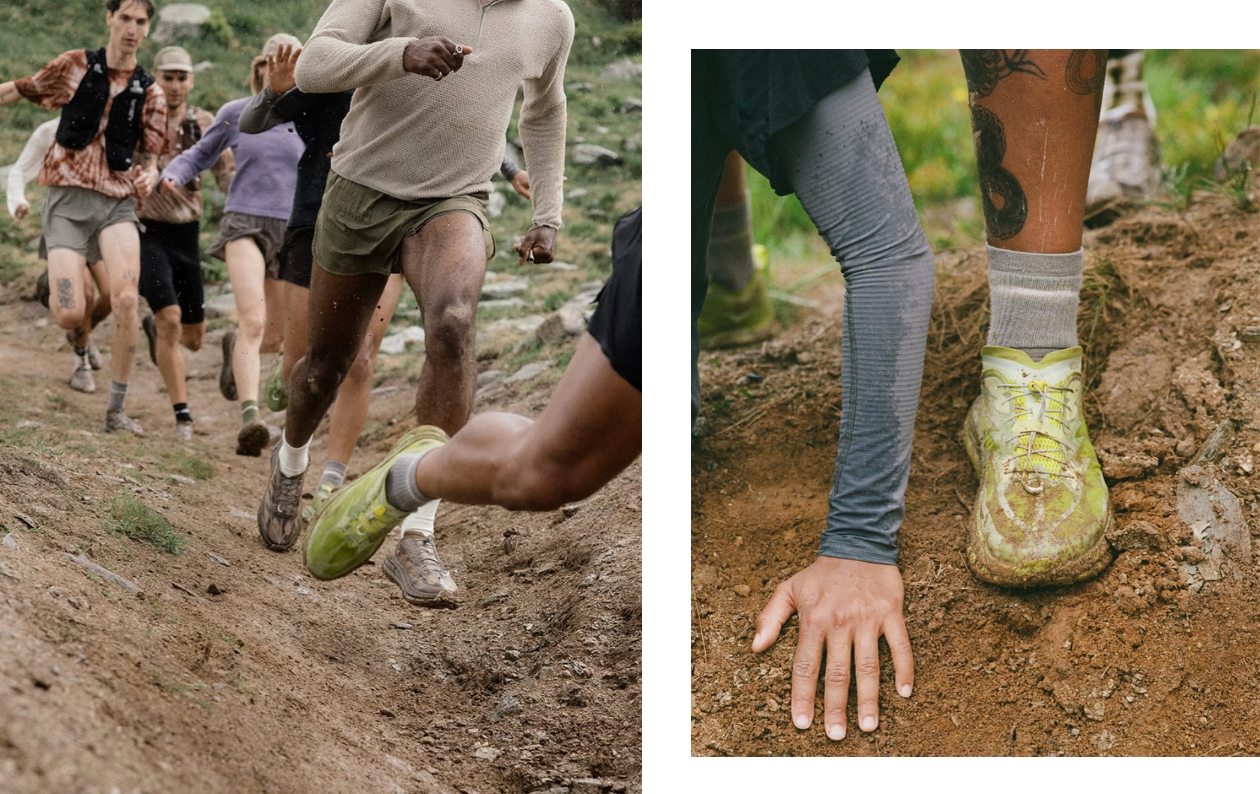
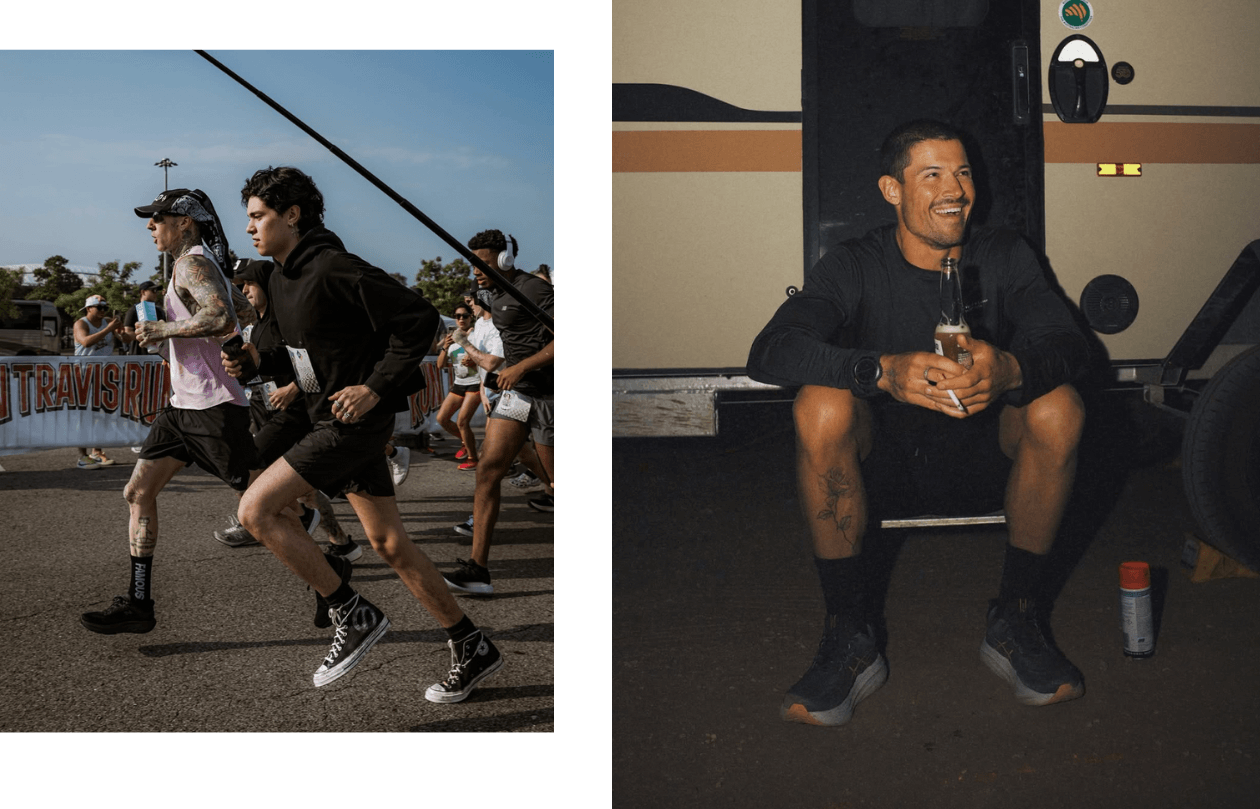
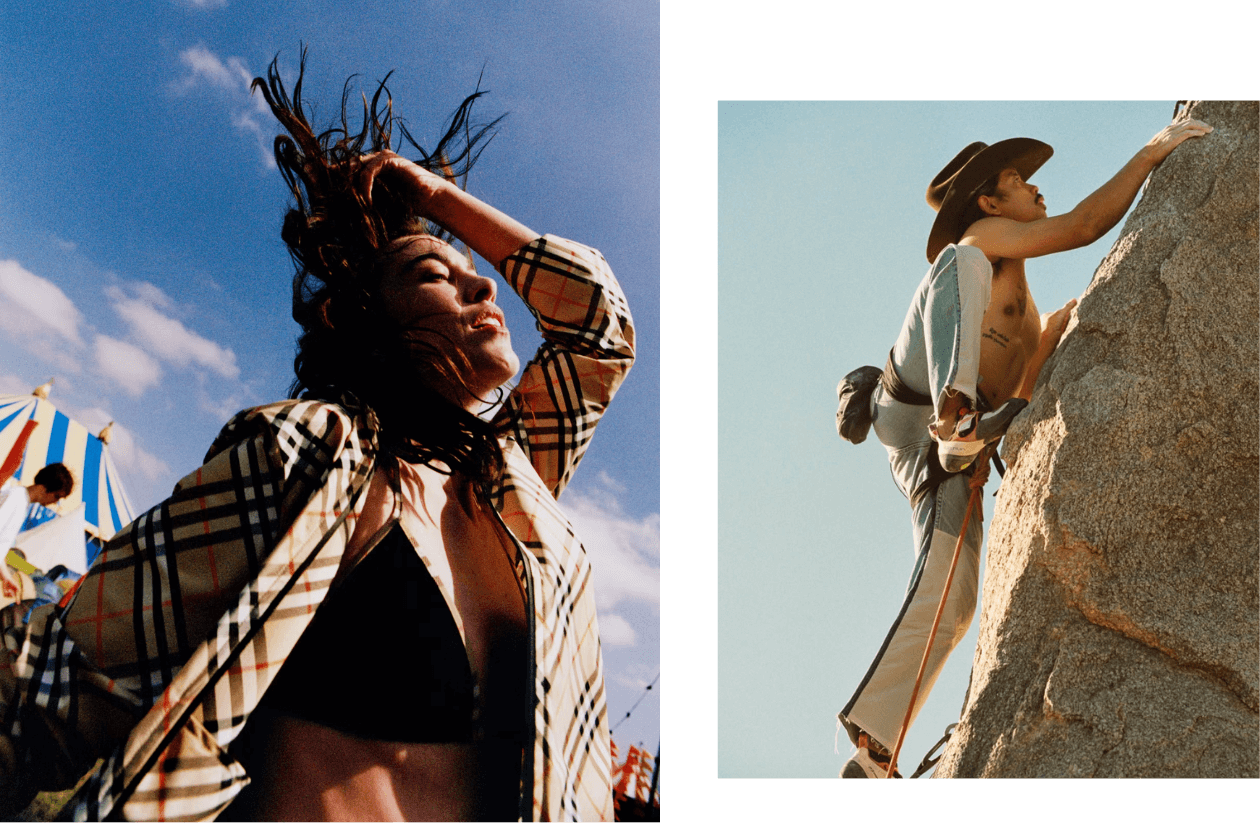
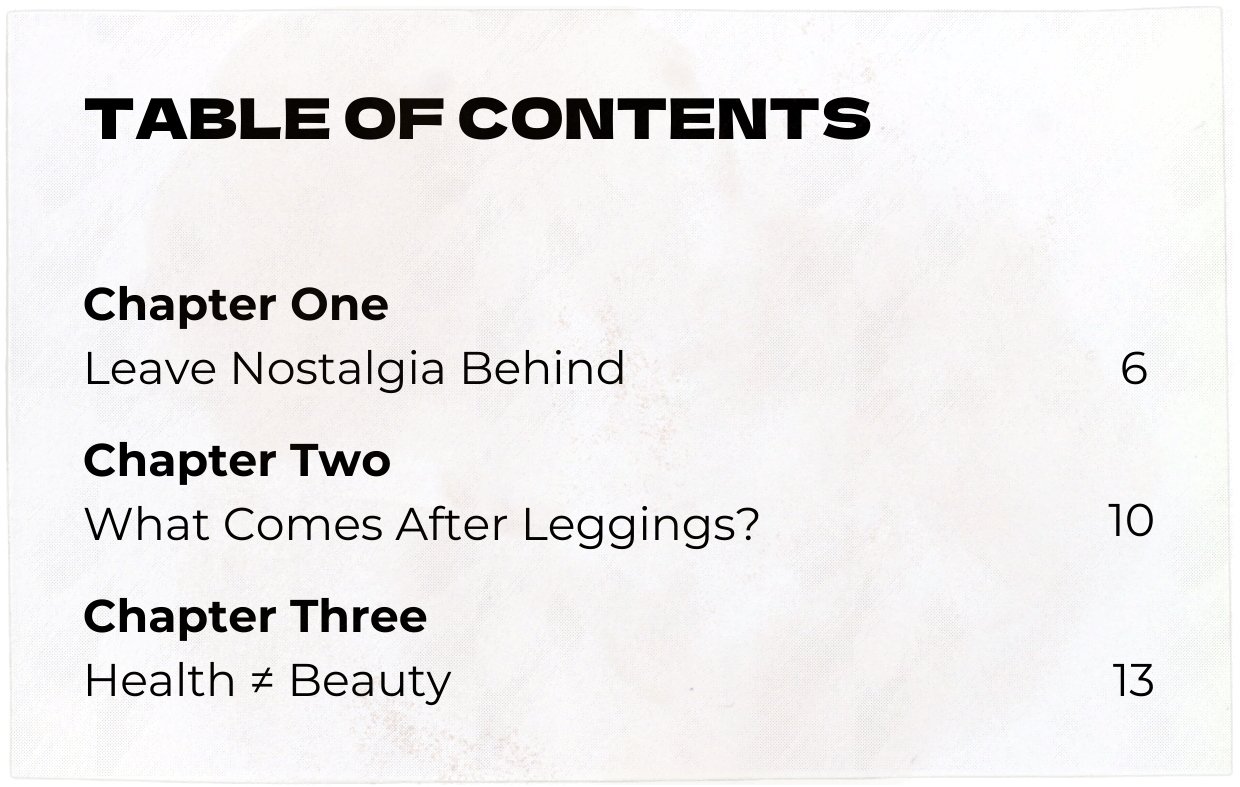
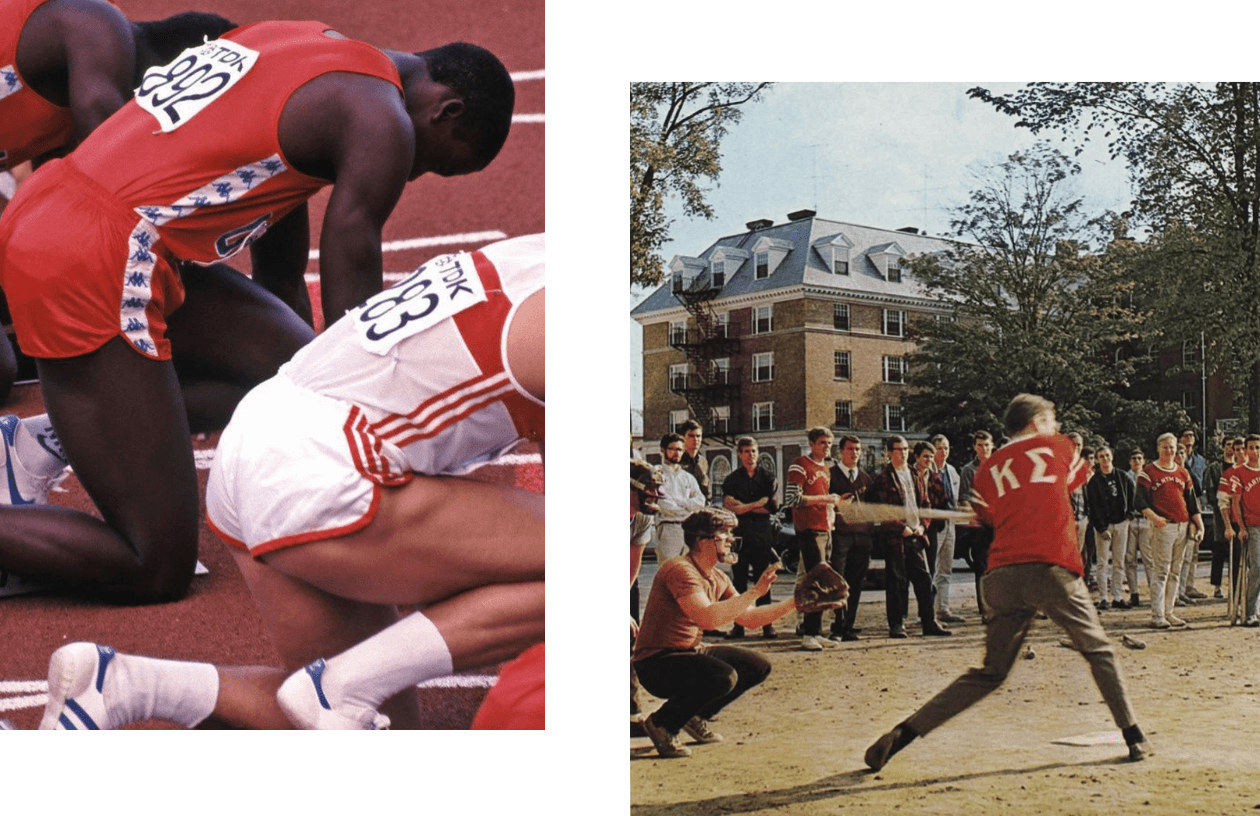
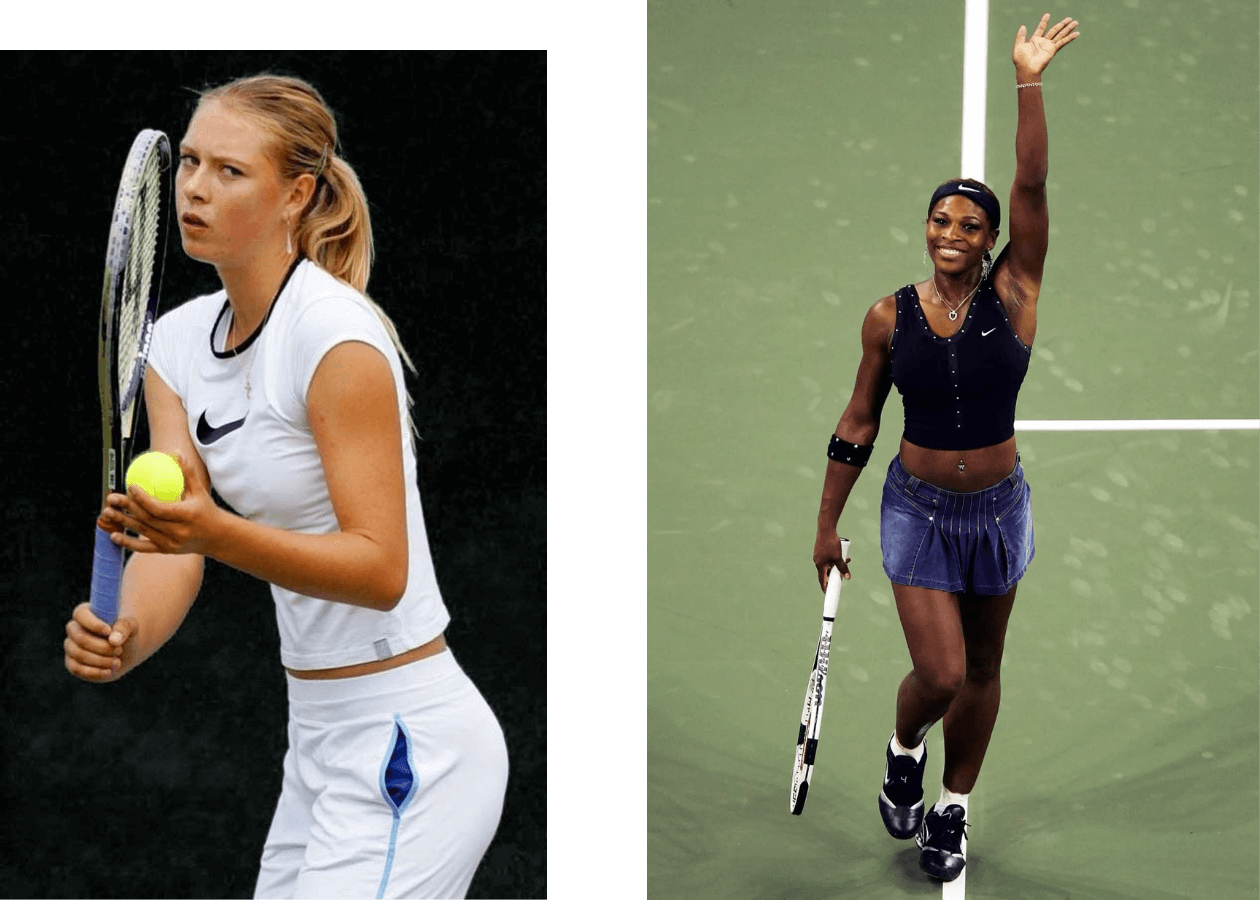
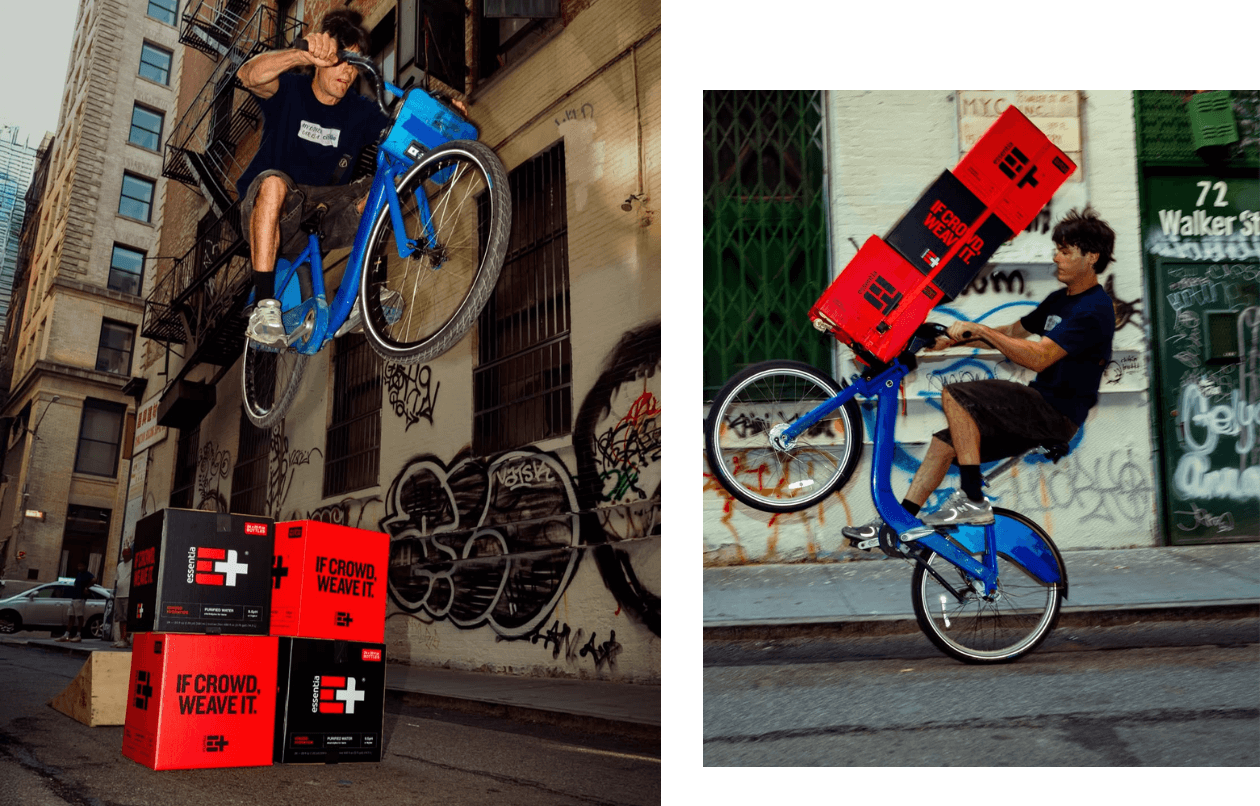
What a great read! So thorough and entirely plausible forecasts as to what happens next for wellness. (I’ll probably hang around as a ‘wellness anarchist’ for a bit longer..!)
Really excellent piece, Viktoriia.